Storing temporary files, alongside your media files and other documents, takes up space you could have used more efficiently. Depending on how many apps you run regularly, you could be storing dozens — even hundreds — of cache and temporary files without realizing it. To stop them from slowing your Mac. We'll show you how to delete temp files.
What are temporary files
Cache and temporary files can include everything from the web browser cache and history, including cookies and passwords, messaging cache folders, partially completed downloads, app temp files and folders, and so much more, taking up space on your Mac. Check the table below for more details.
| Browser cookies | Small pieces of text browsers receive from the websites you visit to make the browsing experience more useful should you open the website again |
| Outdated system logs | Old log files containing information about system activities |
| Application cache | Files apps download to work faster so that the network is not used every time these files are needed |
| Intermediate document versions | A snapshot of a document at a specific time |
Where are temporary files stored
On a Mac, temporary files are stored in a specific folder. To locate it, you first have to quit all active apps. Then, from the Finder, select Go > Go to Folder and type in the following path: ~/Library/Caches/ — in the window that opens, you'll see all temporary files.

How to remove temporary files automatically
Clearing out unnecessary temporary and cache files will increase the amount of hard drive space available, and it should improve your Mac's overall performance and speed.
You can do this in two ways: manually — which we cover below — or using a time-saving tool, such as CleanMyMac. This smart cleaner app has a dedicated Cleanup feature that quickly finds unneeded files and lets you remove them with just a few clicks. You do not have to worry about trashing any files vital for the proper work of macOS since CleanMyMac preselects only safe-to-delete ones.
To remove temporary files automatically, follow these steps:
- Get your free CleanMyMac trial.
- Once you've installed and opened the app, go to Cleanup in the sidebar.
- Click Scan.
- After the scan is complete, you can either review the files it identified for deletion or click Clean to get rid of temporary files and other junk.
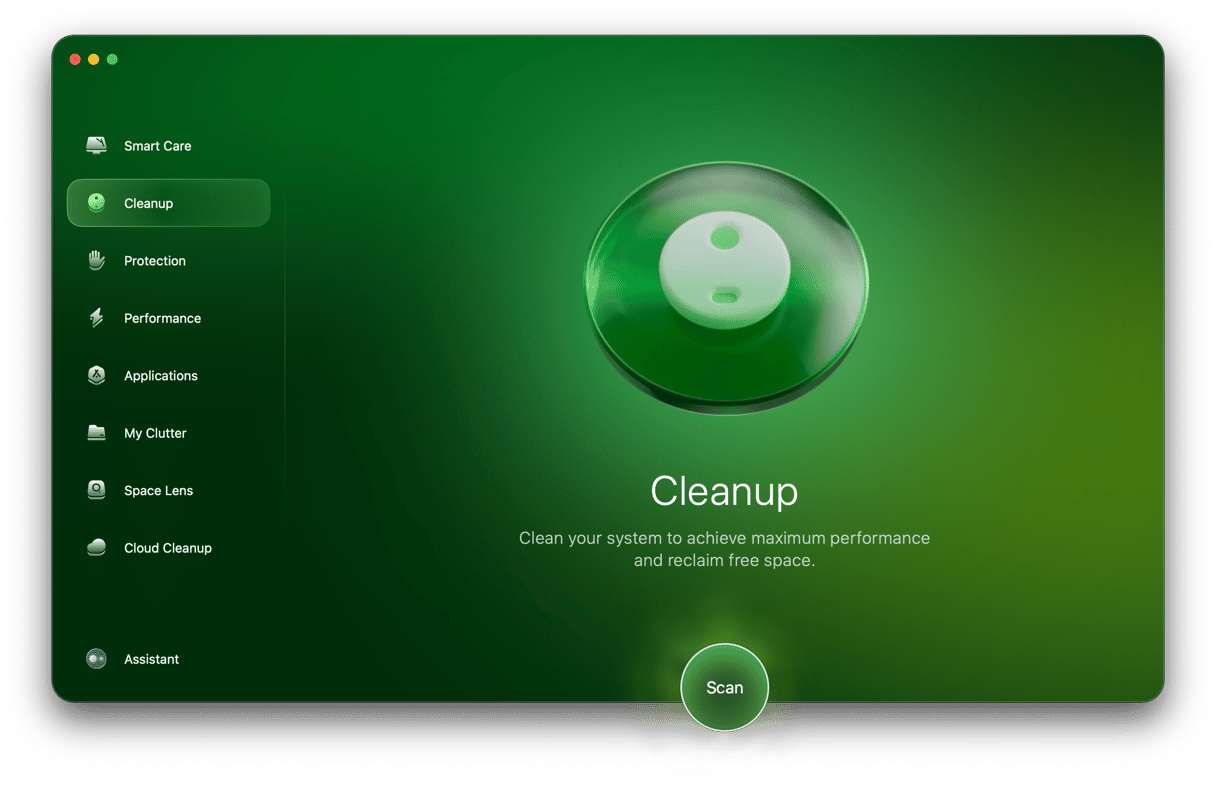

According to the developer, this app removes up to 74 GB of junk on an average Mac. Most of it is system junk, in other words, temporary files and caches. If you are overloaded with temporary files and too much cache data, it will highlight this, and you can safely delete everything, saving you time and space. Another way to clear out cache files and data is to go through your files manually. Here is how you do that.
How to clear temporary files manually
Before you begin, always back up your Mac. Whether you use Time Machine, iCloud, or a third-party hard drive or cloud-based storage system, make sure you've got everything backed up. Now, let's proceed with the necessary steps.
Remove system temporary files
- Quit or close any open and active apps. To make sure this is done, Force Quit anything that hasn't closed properly. Anything that needs to be closed that way might benefit from a cache clearout.
- Go to the Finder.
- Press down the Shift-Command-G keys to pull down the Go to Folder menu.
- Type
~/Library/Caches/and press Return.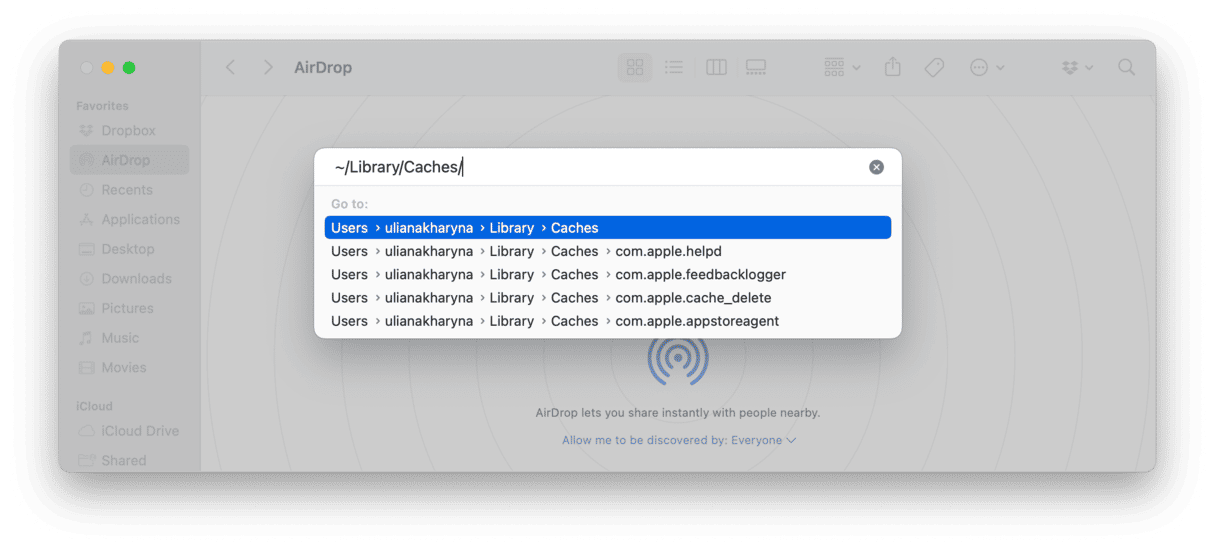
- This will show you the full range of caches and temporary files stored on your Mac. Be certain which ones you want/need to delete before sending them to the Trash.
- To send cache folders to the Trash, either right-click and select Move to Trash or drag and drop them into the Trash.
- Empty the Trash — the same way you would when removing any other files - to clear them out of your Mac.
Delete browser cache
Unless you are deleting everything with some apps, you can make these same changes in settings. For example, in every web browser, you can clear the cache, cookies, saved passwords, and browser history.
How to empty the cache in Safari
Here's how to clear caches in Safari:
- Open Safari and go to Safari Settings (Command-Comma).
- Go to the Advanced tab and select the checkbox next to the "Show Develop menu"/"Show features for web developers" option (depending on your macOS versions, you may see either of them).
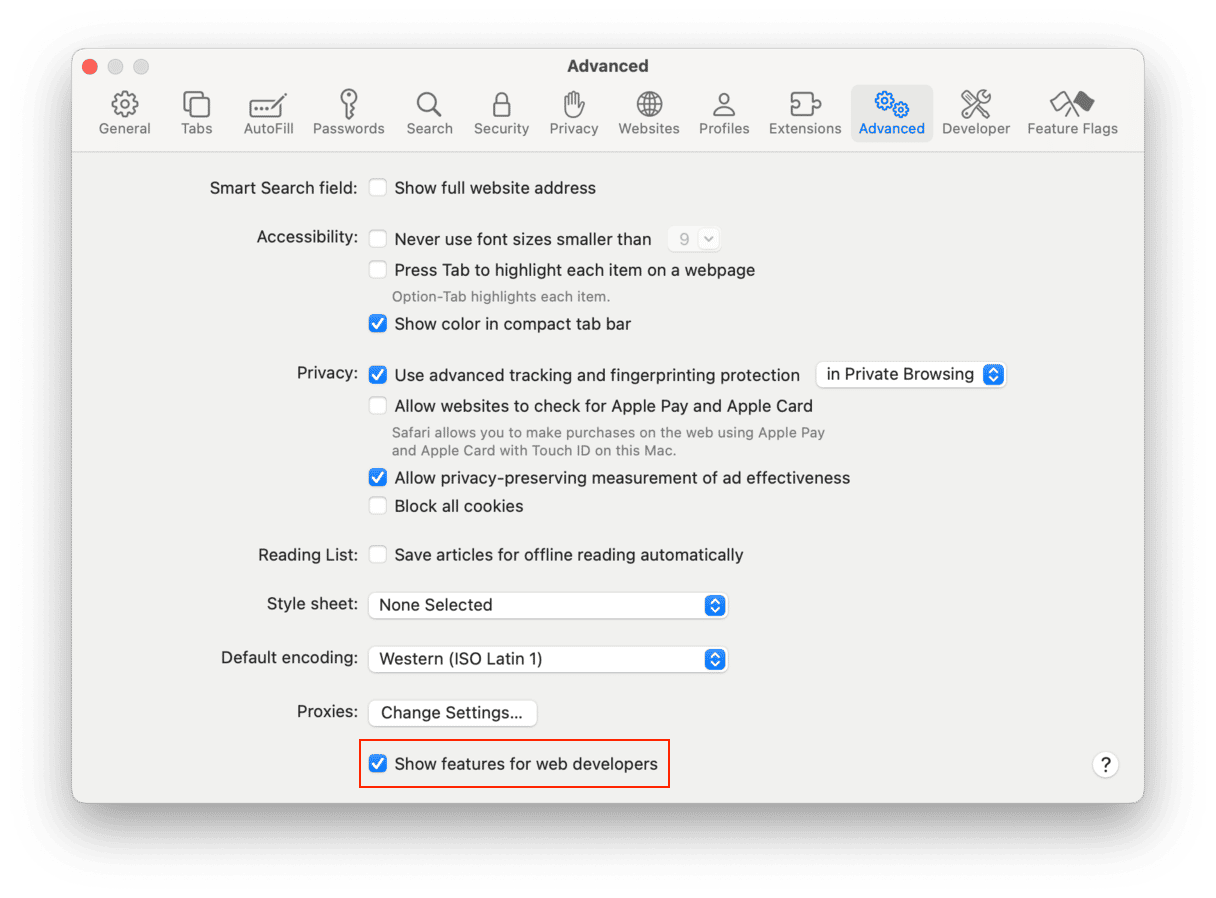
- Click the Develop menu and choose Empty Caches.
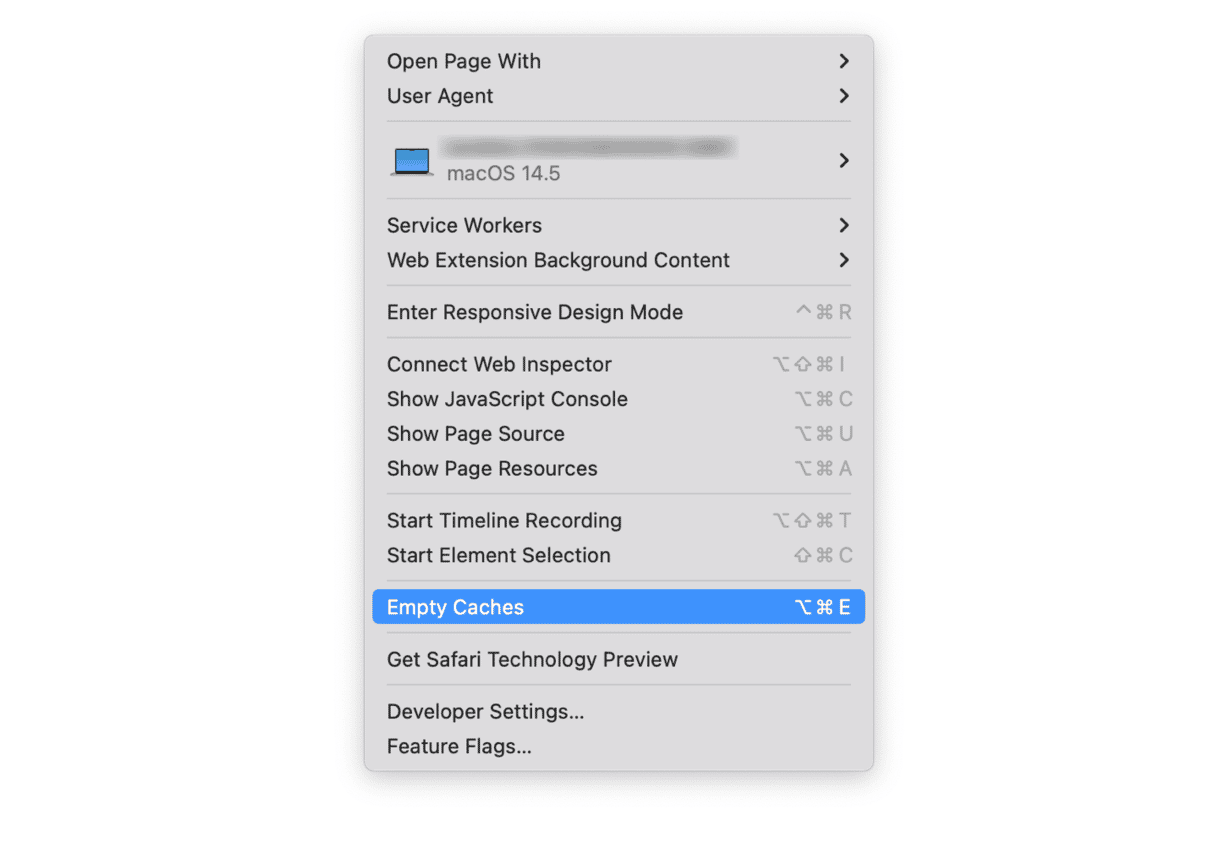
How to empty the cache in Chrome
In Chrome, the process is somewhat different:
- Open Chrome and go to Settings (alternatively, type chrome://settings/ in the address bar).
- Navigate to Privacy and security and select Delete browsing data.
- Set the Time range and make sure that Cached images and files is selected.
- Click Delete data.
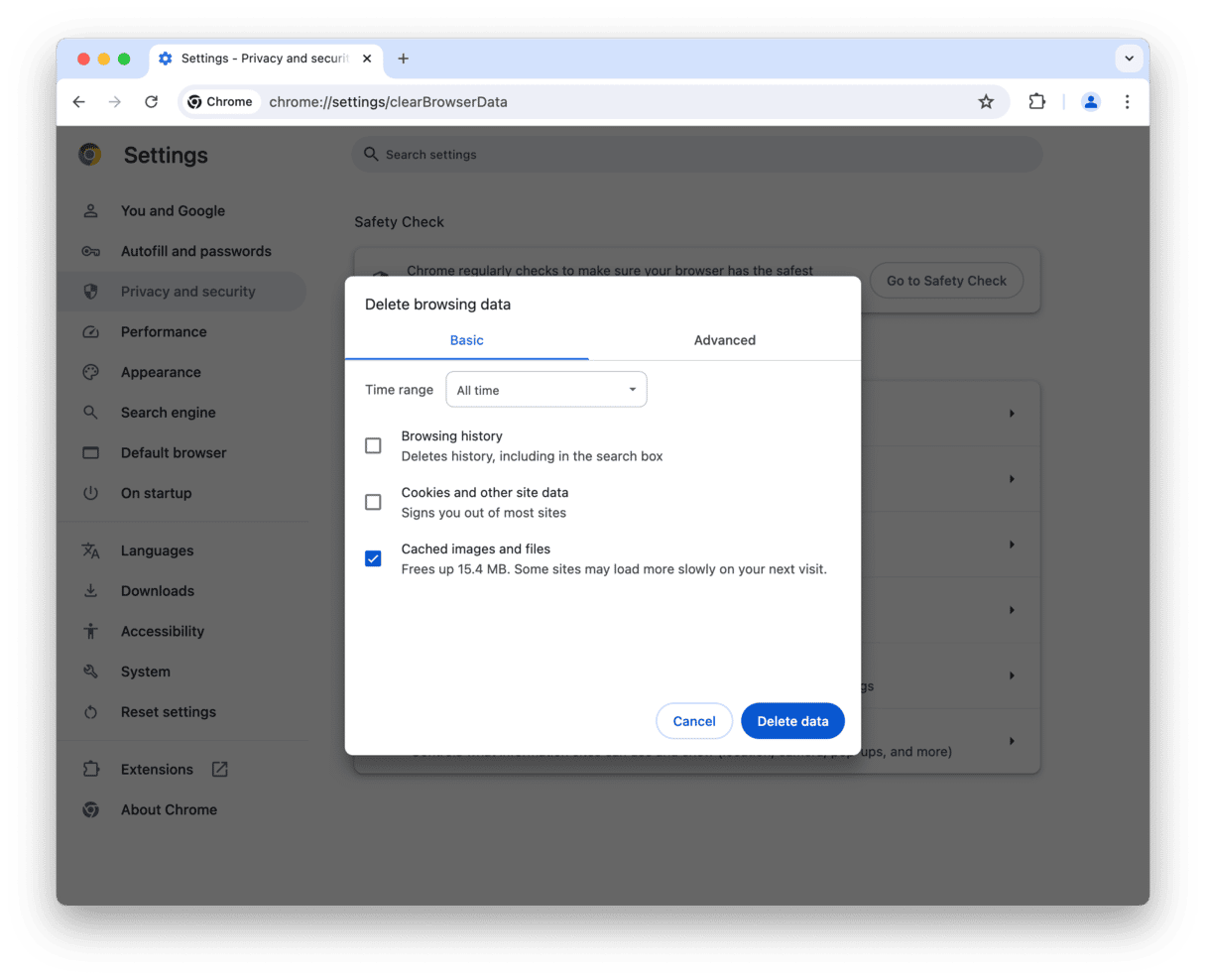
Restart your Mac
Another way to safely delete temporary files, cookies, and the cache is to restart your Mac. If you keep it running and in sleep mode for days or weeks at a time, there are a lot of automatic maintenance systems that can't operate until you restart or shut down your Mac and then start it up again. So restarting your Mac is doing it a big favor and should help it run smoother.


The outdated system files may hold back the performance of any Mac, even the most powerful models. And that's why Mac cleaning software exists. Either you choose a manual or automatic cleanup, your Mac will thank you for it. Hope you've learned something helpful today. Come back for more Apple/Mac tips.






